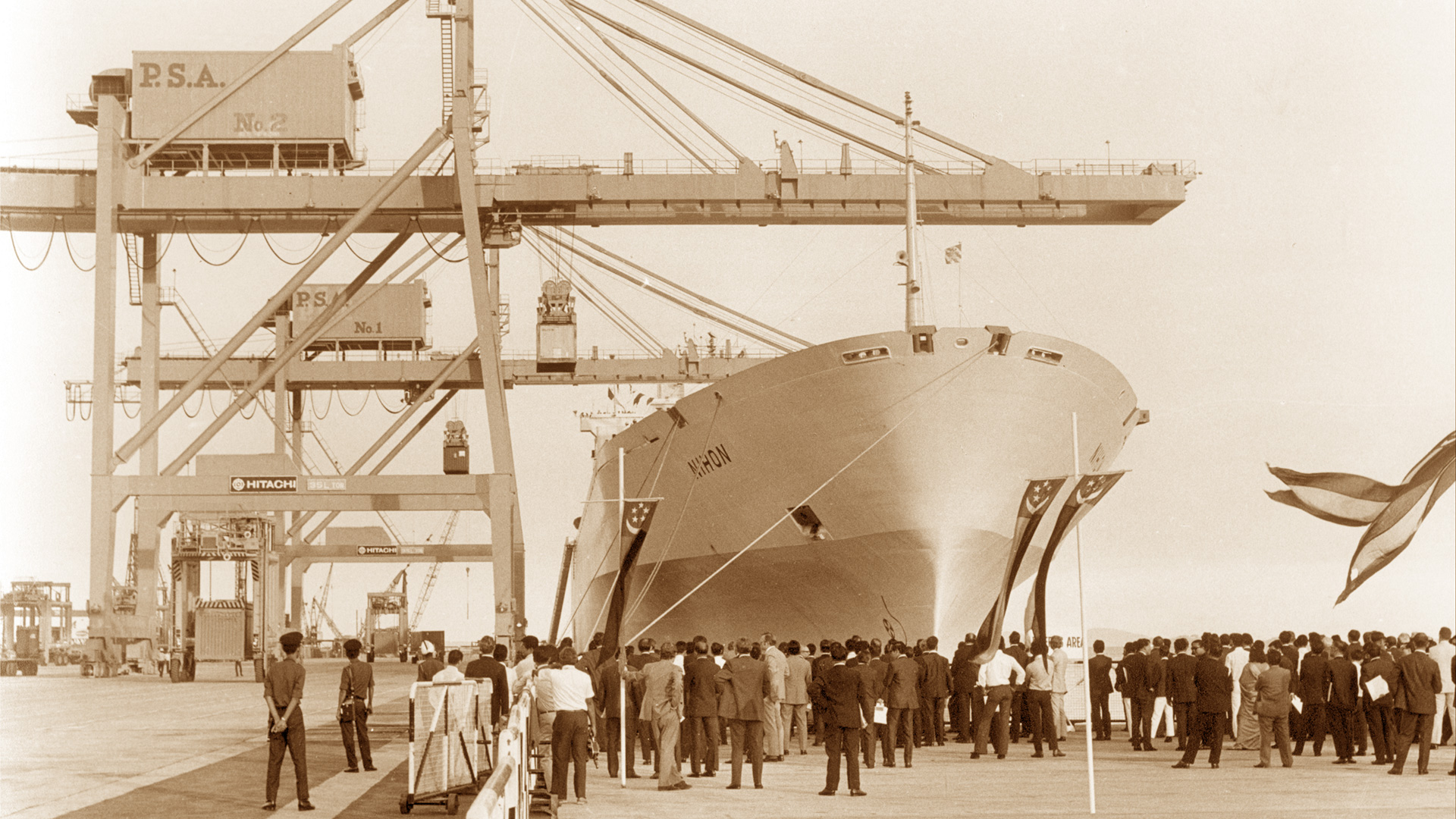The whole idea of container berths, let alone ports, was deeply controversial even in the USA and Europe at that time. When PSA decided in 1966 to build its first container terminal, not a single shipping line had committed to building container ships for the Europe-Far East run.
Lengthy discussions with the World Bank ensued, and a loan was secured to begin work on the East Lagoon container complex. The most significant milestone took place on 23 June 1972, when a container berth was opened at Tanjong Pagar (at the East Lagoon).
The M.V. Nihon, arriving with 300 containers from Rotterdam, was greeted by a crowd of more than 1,000 excited port workers and officials. With that, Singapore became the first port in Southeast Asia to accommodate a third generation container vessel, making it an important link in the new chain of global container ports. It also marked the beginning of containerisation, which propelled Singapore and PSA into becoming one of the global leaders of port management over the next few decades.
The container trade got off to a slow but sure start in the 1970s. However, it was in the 1980s that rapidly expanding world trade provided a great boost to Singapore’s ambitions as a global container port. In 1982, PSA in Singapore handled 1 million TEUs of containers; this was quickly followed in 1986, when PSA handled 2 million TEUs and 1989, which saw volumes rising to 4 million TEUs. PSA had to cope with double-digit growth throughout the decade and the focus then was how to ramp up capacity and productivity quickly to ensure good port service level.
While PSA started out serving mainly the interests cargo volumes of Singapore, it soon pioneered the handling of transhipment business as a business in a mega scale. The whole region, comprising, Southeast Asia and beyond, formed PSA’s transhipment hinterland. Shipping lines started asking PSA to help manage the distribution of their containers to the regional ports and they demanded for even greater certainty in terms of speed, reliability and efficiency.
As the port container volumes kept on growing, PSA added a second terminal (Keppel) in the 1980s, and then a third Terminal (Brani) in the early 90s. In 1990, PSA’s annual throughput hit 5.22 million TEUs, making Singapore the world’s busiest container port. The volumes doubled four years later to 10 million TEUs. By the year 2000, when it officially opened its new terminal at Pasir Panjang, PSA was handling 17 million TEUs at its container terminals in Singapore.


